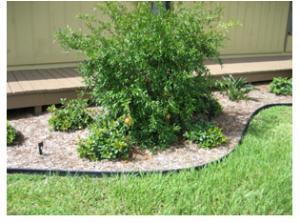Why Grow Pomegranates
 Pomegranate (Punica granatum L.) may have potential as an alternative crop for citrus in Florida and also as a crop for small farmers. If you are not familiar with the plant and fruit, that's ok. It is sufficient to know that both the plant and the fruit are beautiful and the juice is very healthy. Pomegranate is also very well suited to an edible landscape (You haven't heard of such a landscape? Click on this link: http://edis.ifas.ufl.edu/ep146 ).
Pomegranate (Punica granatum L.) may have potential as an alternative crop for citrus in Florida and also as a crop for small farmers. If you are not familiar with the plant and fruit, that's ok. It is sufficient to know that both the plant and the fruit are beautiful and the juice is very healthy. Pomegranate is also very well suited to an edible landscape (You haven't heard of such a landscape? Click on this link: http://edis.ifas.ufl.edu/ep146 ).
First reason: The health benefits associated with pomegranate fruit and juice are well known. Dark- colored berry fruit like pomegranate generally are loaded with anti-oxidants and other components that aid your health (see Antioxidant Activity of Pomegranate Juice and Its Relationship with Phenolic Composition and Processing, University of California, J. Agric. Food Chem., 2000, 48 (10), pp 4581–4589). The pomegranate has been described as "the most medicinal fruit in the world" partly because it is rich in thiamin, riboflavin, niacin, vitamins B6, B9, and C, calcium, iron, magnesium, phosphorus, potassium and zinc.
Second reason: They are fun to grow and eat!
Third reason: The range of cultivars and their traits is eye-opening. The fruit has been cultivated for centuries and is well established as a species of considerable ethnic importance. There are selections used commercially for their fruit and juice, other selections that are dwarf and others used as ornamentals. Fruit size and color range from yellow to pink to bright red with the portion that you eat (the aril) also varying in color from white to pink to dark red. Seed texture can be hard (essentially inedible) to medium to soft. Those selections with soft seeds allow a consumer to open the fruit and scoop out the contents and eat everything without having to separate the pulp from the seeds.
- Home
- Announcements
- Contacts
- How to eat a Pomegranate
- Pomegranate project mission and objectives
- Why grow pomegranates?
- Botany
- Culture
- Health Benefits
- Fruit Uses, Recipes, and Storage
- Florida Experience
- Starting a Pomegranate Enterprise
- Tasting Florida Poms: A Video Journey
- Locating Pomegranate Nursery Plants
- Taste Test Results and Cultivar Descriptions
- Cooperator field trials and field days
- Presentations
- Water Conserv II
- Accessions
- Allied Organizations
- Florida Pomegranate Association
- Information Resources
- National Clonal Germplasm Repository
- Pesticides
- Southeastern U.S. Cultivars
- What's New
